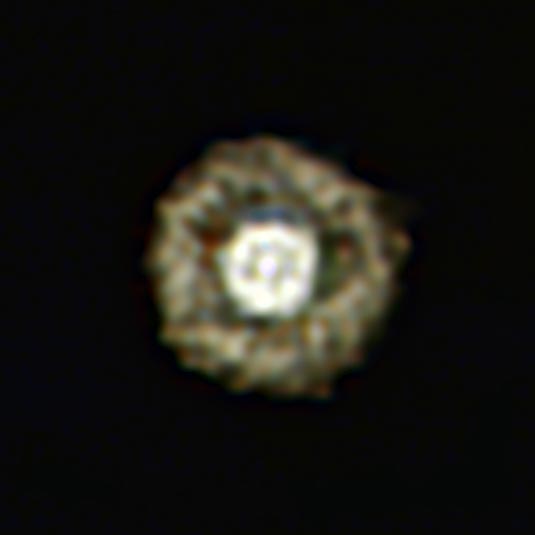
Description: Nebula
Position: RA 17h 19m 49.33s Dec -39° 10' 37.94?
Constellation: Scorpius
Distance: 13,000 light years
Apparent magnitude: 13.1
Image Credit: ESO/E. Lagadec
Release date: September 28, 2011
ABOUT THIS IMAGE:
Astronomers have used ESO's Very Large Telescope to image a colossal star that belongs to one of the rarest classes of stars in the Universe, the yellow hypergiants. The new picture is the best ever taken of a star in this class and shows for the first time a huge dusty double shell surrounding the central hypergiant. The star and its shells resemble an egg white around a yolky center, leading the astronomers to nickname the object the Fried Egg Nebula.
The monster star, known to astronomers as IRAS 17163-3907 [1], has a diameter about a thousand times bigger than our Sun. At a distance of about 13 000 light-years from Earth, it is the closest yellow hypergiant found to date and new observations show it shines some 500 000 times more brightly than the Sun [2].
"This object was known to glow brightly in the infrared but, surprisingly, nobody had identified it as a yellow hypergiant before," said Eric Lagadec (European Southern Observatory), who led the team that produced the new images.
The observations of the star and the discovery of its surrounding shells were made using the VISIR infrared camera on the VLT. The pictures are the first of this object to clearly show the material around it and reveal two almost perfectly spherical shells.
If the Fried Egg Nebula were placed in the center of the Solar System the Earth would lie deep within the star itself and the planet Jupiter would be orbiting just above its surface. The much larger surrounding nebula would engulf all the planets and dwarf planets and even some of the comets that orbit far beyond the orbit of Neptune. The outer shell has a radius of 10 000 times the distance from the Earth to the Sun.
Yellow hypergiants are in an extremely active phase of their evolution, undergoing a series of explosive events - this star has ejected four times the mass of the Sun in just a few hundred years [3]. The material flung out during these bursts has formed the extensive double shell of the nebula, which is made of dust rich in silicates and mixed with gas.
This activity also shows that the star is likely to soon die an explosive death - it will be one of the next supernova explosions in our galaxy [4]. Supernovae provide much-needed chemicals to the surrounding interstellar environment and the resulting shock waves can kick start the formation of new stars.
The
Very Large Telescope mid-IR instrument, VISIR, captured this delicious
image of the Fried Egg Nebula through three mid-infrared filters that
are here colored blue, green and red [5].
Notes
[1] The name indicates that the object was first spotted as an infrared source by the IRAS satellite in 1983 and the numbers show the star's place in the sky, in the heart of the Milky Way in the constellation of Scorpius (The Scorpion).
[2] IRAS 17163-3907 is one of the 30 brightest stars in the infrared sky, at the wavelength of 12 microns observed by IRAS, but it had been overlooked because it is quite faint in visible light.
[3] The total mass of this star is estimated to be roughly twenty times that of the Sun.
[4] After burning all their hydrogen all stars of ten solar masses or more become red supergiants. This phase ends when the star has finished burning all of its helium. Some of these high-mass stars then spend just a few million years in the post-red supergiant phase as yellow hypergiants, a relatively short time in the life of a star, before rapidly evolving into another unusual type of star called a luminous blue variable. These hot and brilliant stars are continuously varying in brightness and are losing matter due to the strong stellar winds they expel. But this is not the end of the star's evolutionary adventure, as it may next become a different kind of unstable star known as a Wolf-Rayet star before ending its life as a violent supernova explosion.
[5]
The three mid-infrared filters that were used passed light at wavelengths
around 8590 nm (blue), 11 850 nm (green)
and 12 810 nm (red).